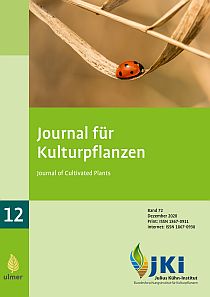Agronomic evaluation of bone char as phosphorus fertiliser after five years of consecutive application
DOI:
https://doi.org/10.5073/JfK.2020.12.02Keywords:
Bone char, phosphorus recycling, recycling fertiliser, plant nutritionAbstract
Bone char (BC), pyrolyzed defatted bones from slaughterhouse waste, may be a promising secondary raw material to produce phosphorus (P) fertiliser, but its agronomic value has not yet been shown in longer-term field experiments. Phosphorus in BC (15 % P) is mainly bound in a structure similar to hydroxylapatite (HA). Generally, P in HA is of low solubility and, consequently, it can be expected that bones or BC have a low fertilisation value. Better solubility of P is expected from BC enriched with sulphur (BCplus). In 2013, a field experiment was established to test the fertilisation potential of BC and BCplus compared to a control (P0) and triple super phosphate (TSP) treatment. According to their mean PCAL concentrations (0–30 cm) plots were assigned to the initial soil P-test class (iSPTC) A (11 mg kg–1 PCAL), B (21 mg kg–1 PCAL), and C (47 mg kg–1 PCAL). After a first crop rotation an increased cumulative yield was determined for iSPTC-A depending on the fertiliser treatment with means of relative yield of P0 (90 %) < BC (94 %) < BCplus (95 %) < TSP (100 %). Effects on the relative P uptake of grain in iSPTC-A depending on the fertiliser treatment were in the order of P0 (81 %) < BC (88 %) < BCplus (91 %) < TSP (100 %) and in iSPTC-B of P0 (84 %) < BCplus (90 %) < BC (92 %) < TSP (100 %). Fertiliser treatments had no effect on mean yield and P uptake in the first crop rotation if initially sufficient soil P (iSPTC-C) was available. An increase of PCAL concentrations was only achieved by TSP fertilisation. Future experimental years will show, if BC fertilisers are able to maintain sufficient P availability to crops in the long term.
Published
Issue
Section
License
The content of the journal is licensed under the Creative Commons Attribution 4.0 License. Any user is free to share and adapt (remix, transform, build upon) the content as long as the original publication is attributed (authors, title, year, journal, issue, pages).
The copyright of the published work remains with the authors. The authors grant the Journal of Cultivated Plants, the Julius Kühn-Institut and the OpenAgrar repository the non-exclusive right to distribute and exploit the work.







